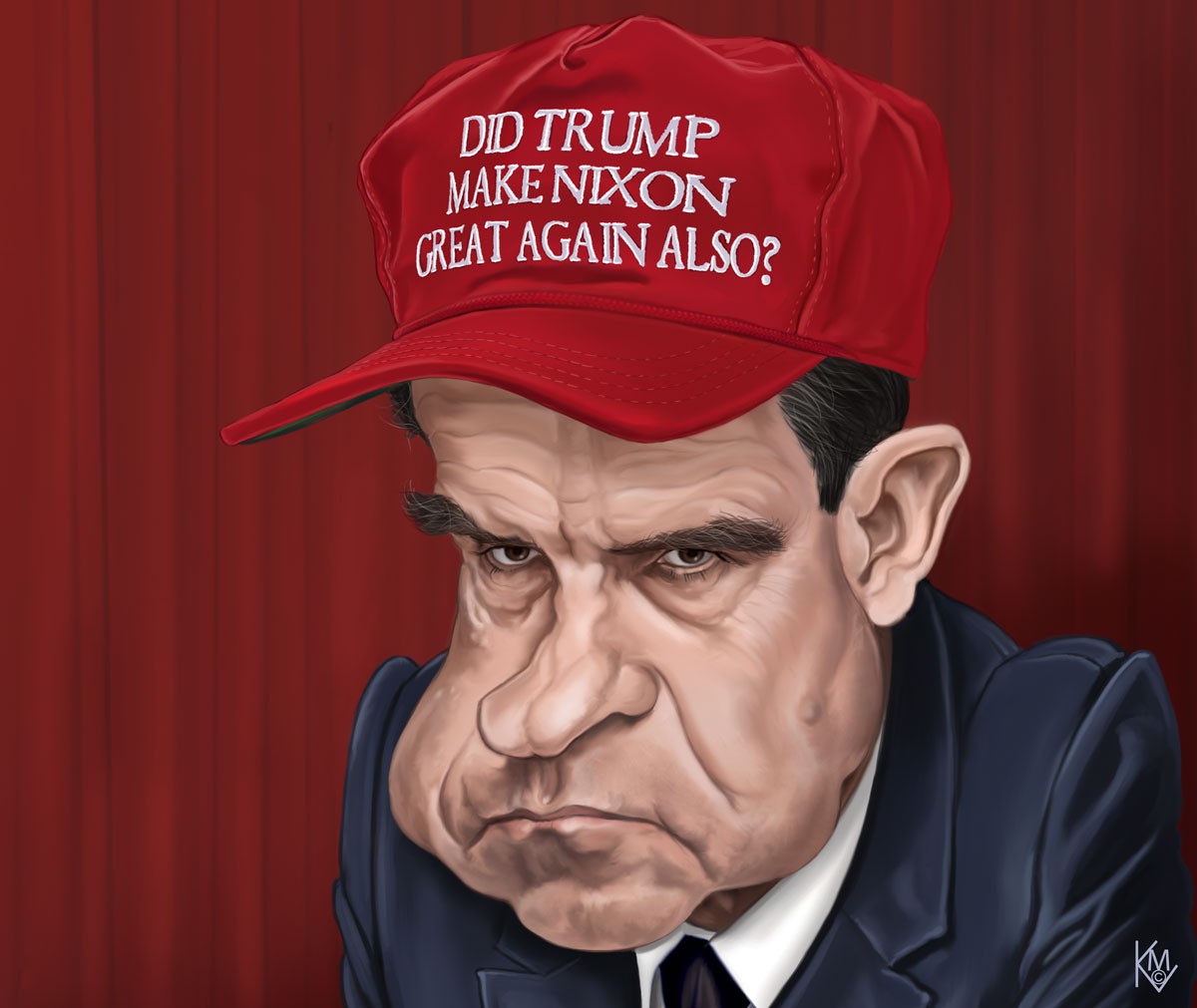
YORBA LINDA: WHERE GOOD REPUBLICANS GO TO STAY DEAD
It's Friday morning, Oct. 14, in Yorba Linda—named after the beautiful or narcissistic Yorba family, Californios who once owned much of present-day Orange County, with the city motto “Land of Gracious Living”—and I'm driving the Richard Nixon Freeway. This is, of course, the first of many opportunities offered your humble reporter toward considering the day's reopening of the remodeled, rehabilitated, repurposed Richard Nixon Library and Birthplace.
The “freeway,” however wide and pleasingly landscaped, is actually State Route 90 or Imperial Highway, and before arriving at the 37th president's archives, museum and final resting place, I recall previous visits, one 26 years ago for the inaugural opening and more recently to hear Senator George McGovern—of all people!—introduced by writer, notorious public intellectual and committed Nixon-hater Gore Vidal. Those two Nixon enemies (my heroes) are gone, but I'm back, a dyed-in-the-wool Nixon-hater, perhaps a love-hater or, as the woman wearing a Nixon T-shirt describes it to me later in the museum's refurbished, technologically sexed-up and now newly unredacted Watergate display, “It's fascination, not adoration.” Mid-thirties, dark hair, tattooed, she smiles and nods. “I know. It's weird.”
“I know” and “It's weird” might be the themes of the day, lines from the script of a self-guided tour I hear or imagine hearing as I follow—if purposefully veer from—the well-choreographed collective official misstep through history that is, to be fair, any presidential library romp, through halls of hagiography and self-indulgence, dioramas and collectibles. Yet it will also be a chance to examine the story of not only the Tricky One, but also myself, an all-American 1960s-defined SoCal boy-man citizen of our benighted republic who wonders what this or any other Nixon story might mean at the moment his GOP seems to have, even by its own perverse standards, strayed, pushed, screamed, groped and lied its way to a place far beyond even the worst days and darkest nights of Yorba Linda's famous son, born and now buried in the county where Ronald Reagan whimsically suggested “good Republicans go to die,” a disgraced crooked politician and, lately, a moderately redeemed elder statesman.
Signs on Yorba Linda Boulevard direct me to park at the adjacent Friends Church. A Nixon geek, I know his family was Quaker, members of the Religious Society of Friends. As weirdness goes, this is a foundational fascination, as Dick himself was only moderately devout (see Carter for genuine, Reagan for hypocritical, Clinton for devil-Elvis, W. for “saved” recovering alky, and Obama for Christian and Muslim, ha ha). I park in the empty lot, noting the LOT FULL sign—somebody anticipating a crowd and maybe putting early-bird visitors in a good or self-congratulatory mood. I fear this will be the last I feel of either as I walk from the lot of the oldest Quaker congregation in Orange County, of which Nixon's parents were founding members and Dick attended as a boy and whose theological teachings the Watergate break-in, enemies list, and bombings of Cambodia and Laos would seem to contradict, to offer only three terrifically unfriendly examples. Just sayin', as they say on FOX News.
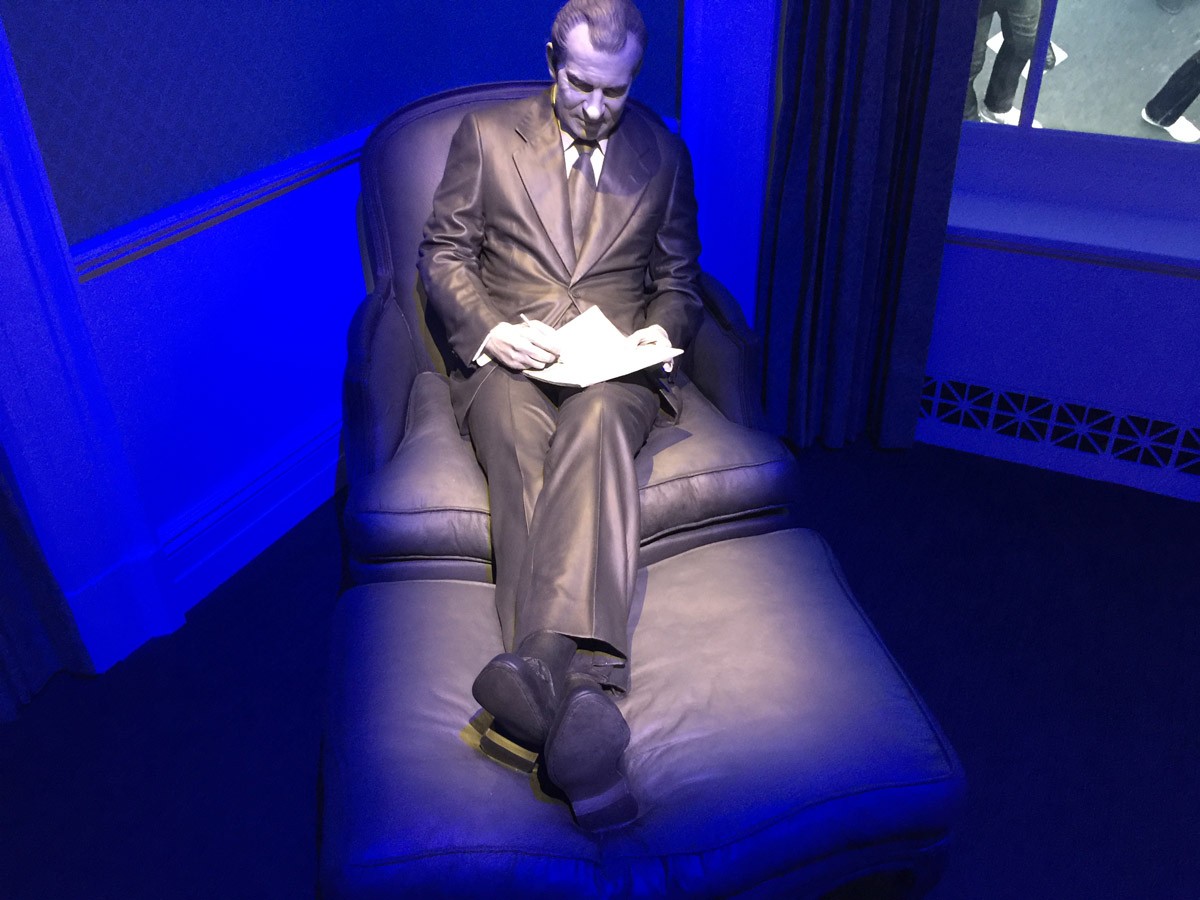
EIGHTEEN AND A HALF WAYS OF LOOKING AT RICHARD NIXON
Speaking of FOX News, whose big cheerful face greets me on my way to the VIP tour, Ambassador George Argyros photo-op, 11 a.m. dedication spectacle and public opening? Why, it's the former House Speaker with the amphibious name, reptilian politics and unabashed pandering to power—lately begging to be Donald Trump's cabana boy. He'll soon lecture here, according to the electronic welcome sign at the intersection of church and state. Newt Gingrich, self-celebrated GOP intellectual dynamo, will no doubt weigh in on the occasion of what a local reporter helpfully called this “re-imagining” of the library.
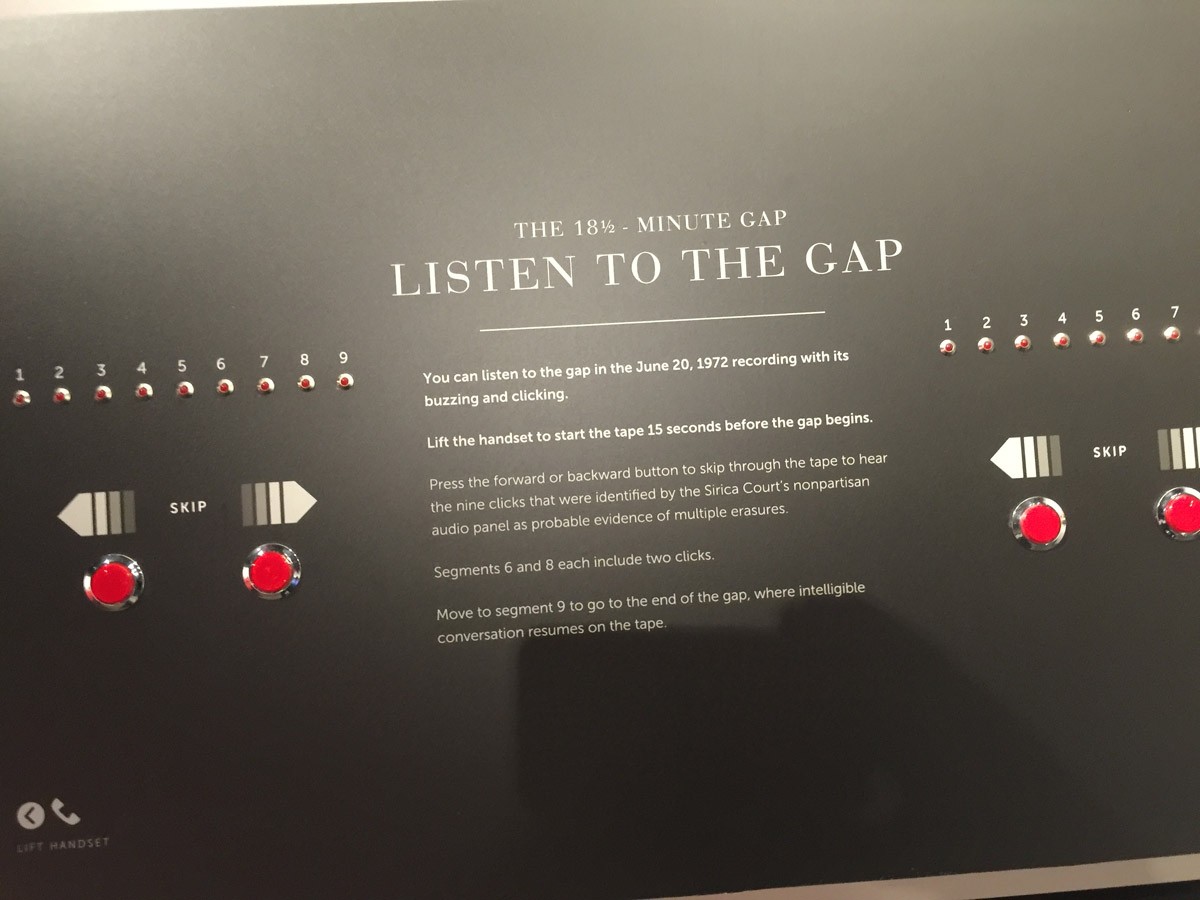
I smile back at Newt's generous smirk and consider both his and Nixon's impressive biographies of astonishingly prismatic duplicity, narratives that, considered in daylight, seem as elegantly contrived as, well, an electronic digital billboard flashing its pixelated hurrahs outside the library of the president who resigned because he spied and lied and had the bad luck to get caught. The medium seems exactly the message, a big outdoor television with a crook smiling from it. Many suspect the recently completed $15 million renovation, which I mean to take in, if not quite celebrate, is an effort to “normalize” Nixon. Indeed, anything you might say about Nixon could be true now, and no doubt somebody is going to say it today, inside, via the much-advertised “interactive,” “multimedia” “exciting hands-on!” displays.
“A more complete story” is promised, post-2007 takeover struggle of the once-privately run library by the National Archives and curation by independent historians. In comparing Nixon to other presidents, is it possible the popular revisionists, normalizers and objective, fair-minded historians are right? Maybe Nixon was at least not as bad as some; is now only benign, a man of his times; and, in his re-presentation at least, weirdly authentic, if only at being inauthentic.
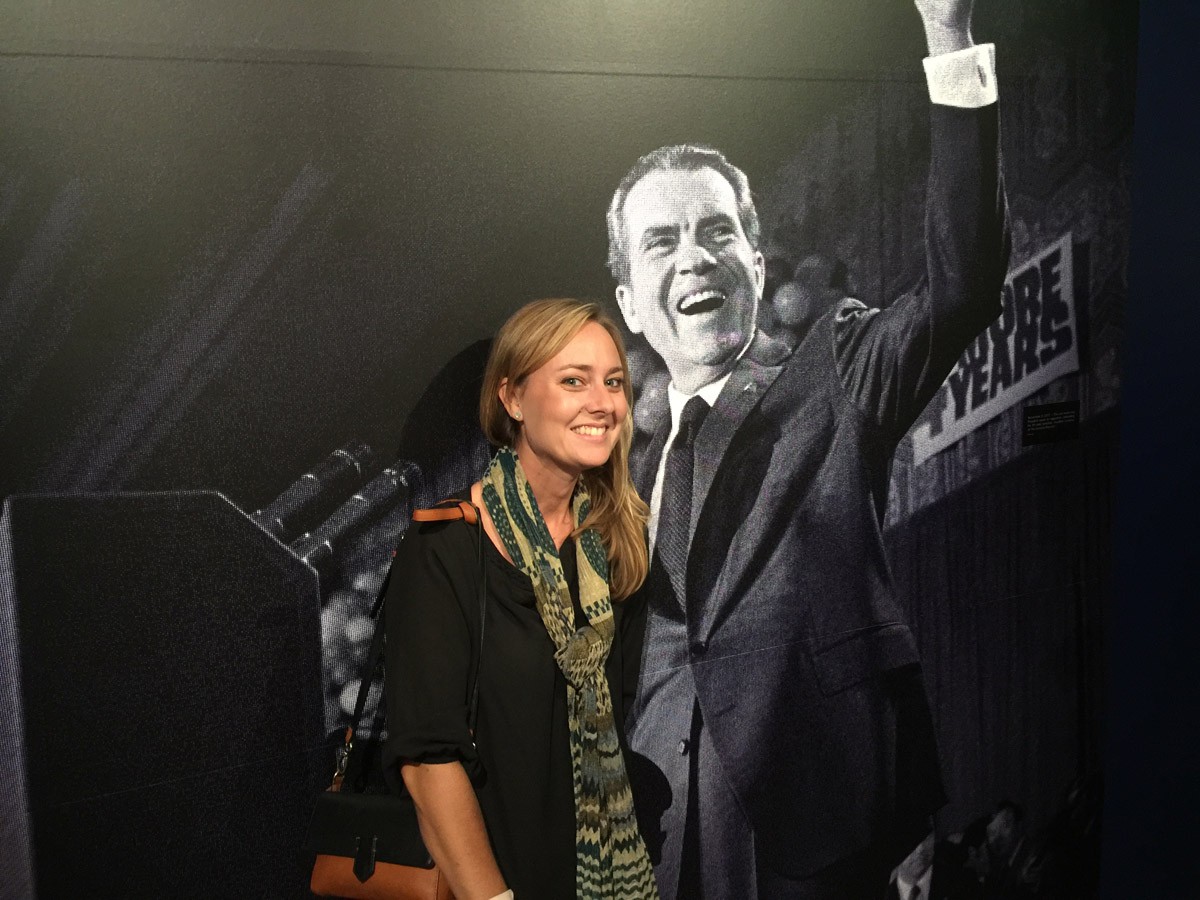
Strolling to the festivities, past hundreds of tiny U.S. flags lining the boulevard, sidewalk and median strip, I recall Wallace Stevens' “Thirteen Ways of Looking at a Blackbird”:
I do not know which to prefer
The beauty of inflections
Or the beauty of innuendoes, the blackbird whistling
Or just after.
Or, to put it less poetically, I do not know which to prefer: the idea that Donald Trump has revived the worst of Nixon's GOP (racist “Southern strategy,” to name one element) or, at last, destroyed the not-so-grand party. I do not know which to prefer: Nixon, once a moderate “Rockefeller Republican” with arguably progressive positions on the environment and women's rights; Nixon as anti-commie crusader turned “Red” China opener-upper; Nixon as carpet bomber; or Nixon as exiled and disgraced, a widower grandfather, incessant memoirist and self-appointed “elder statesman” who might, on a good day, perhaps today, three weeks from our awful election, have been a singular if ironic voice of—imagine this—propriety and decorum-based principled resistance to the coup d'état by Il Trumpolini.
I am an English teacher and employ truth and beauty as my lodestars.
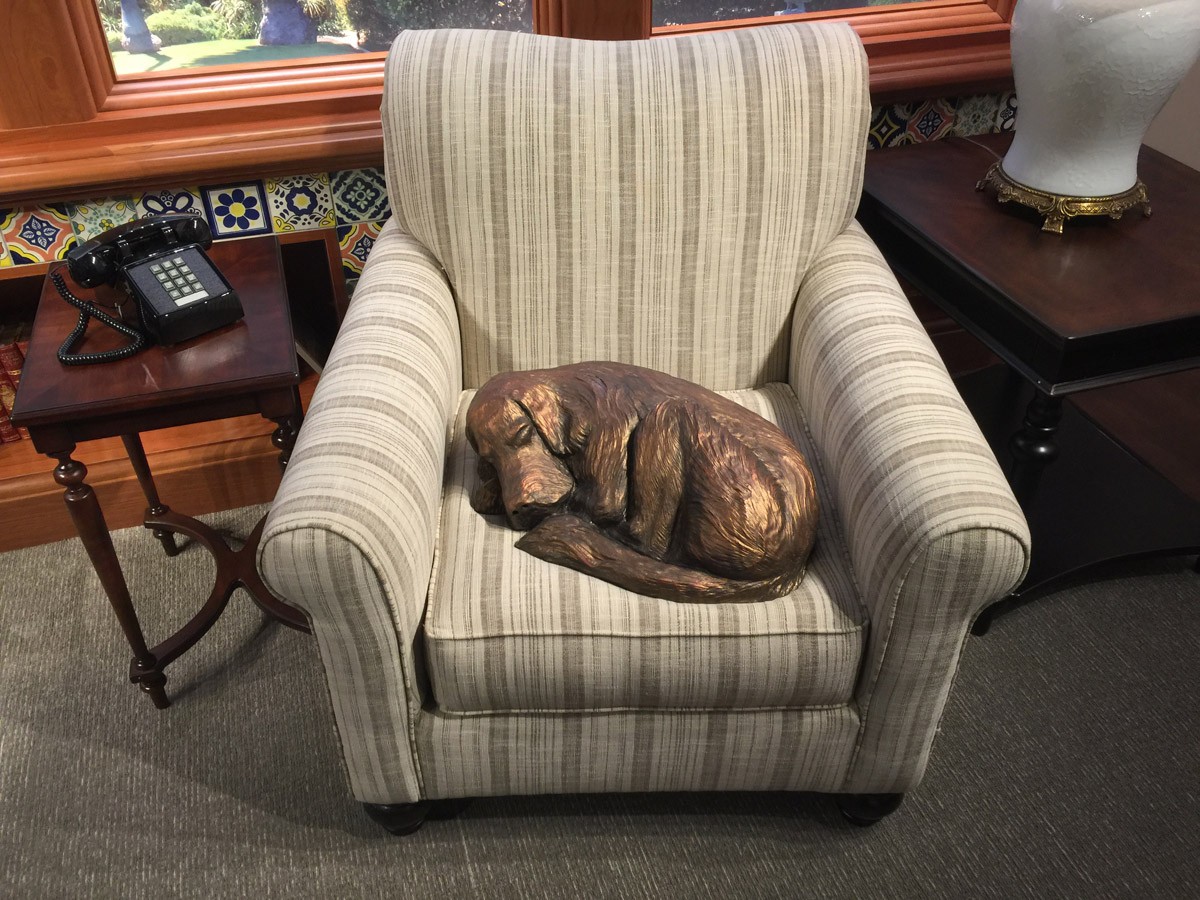
HE DID NOT QUIT. HE RESIGNED!
I proceed, eager to hear the whistling of history, perhaps as heard in the “Checkers speech” or in the previously unshared audio of 18 minutes of tape “lost” by the world's most loyal secretary. Or, as previewed in press materials, as I stand in the “exact replica of the Oval Office” or among “60 new exhibits” or “aboard Marine One, the glimmering presidential helicopter.” I like glimmering. And helicopters. But how, exactly, will any of this explain what's normal or what passes for normalizing?
It's hard to tell from the VIP tour, during which I bump into Henry Kissinger (the closest I'll get to a genuine war criminal); chat with friendly, full-body-bunting-clad docents; shake hands with major philanthropist/slumlord/Chapman University éminence grise Argyros in the fake Oval Office he paid for; enjoy the breakfast buffet; and then endure the one-hour dedication ceremony. You can view highlights on YouTube—I dare you. I had to attend, out in front of a big, decorated stage, with the launch of media-camera drones, the crowd filling in, the docents gathering as if pigeons to a fountain.
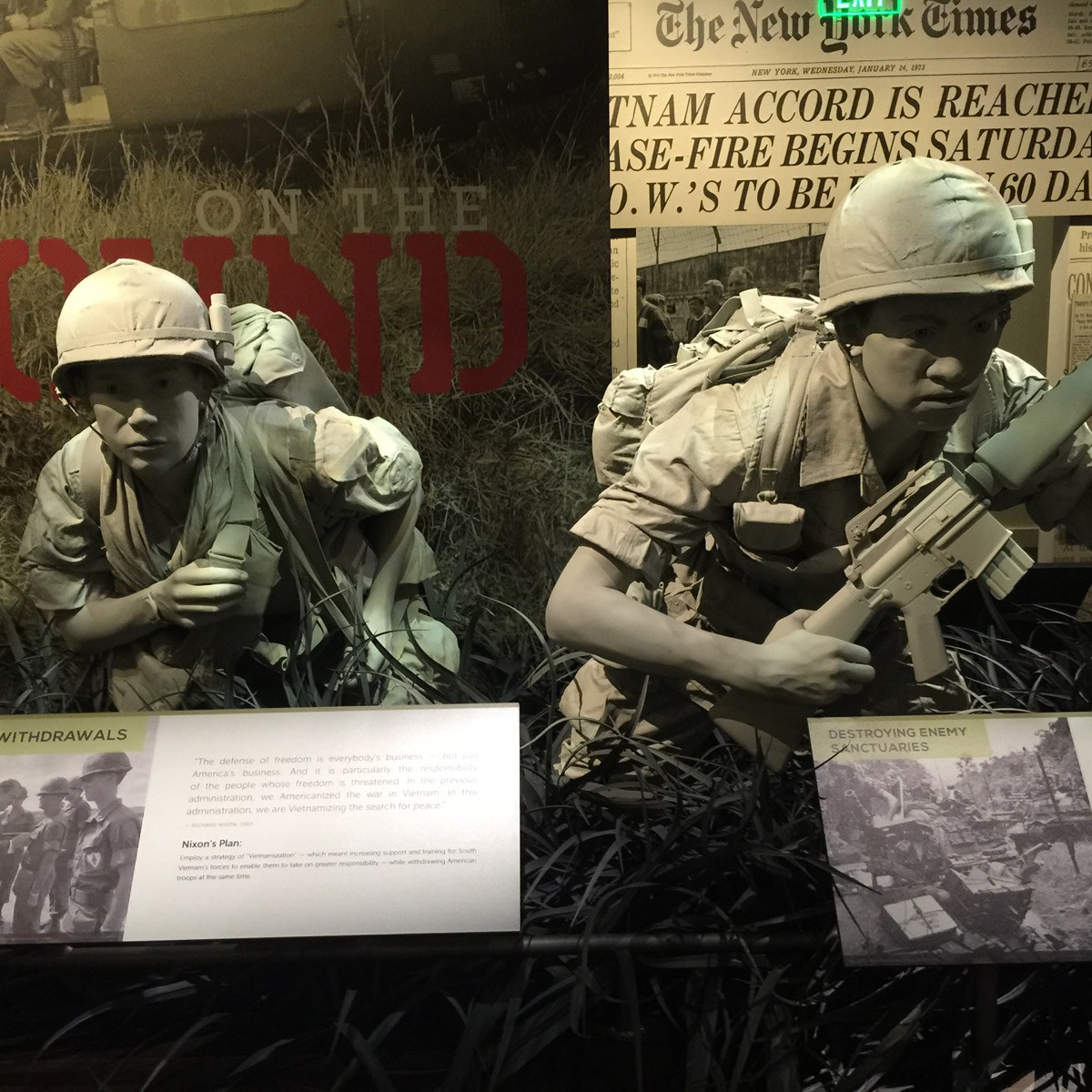
There was the introduction of guests: Dick's younger brother Ed, his daughter Tricia, his granddaughter Melanie Eisenhower, Congressman Ed Royce, Chinese diplomats. The crowd is silent until, yes, big applause for the war criminal. Then the color guard, national anthem, a prayer from a Newport Beach monsignor and—Fight on!—USC's Trojan Marching Band. (Wife Pat was an alum.) We're welcomed by the Richard Nixon Foundation president and the library's director. U.S. archivist David Ferriero describes “a place of discovery, rediscovery, investigation, debate and analysis.”
As if contradicting or at least confusing that description, we get a flyover by Air Force planes. Former California Governor Pete Wilson speaks, offering that “Nixon deserves this,” a genuinely sincere assessment or unintentional sadism. He takes a jab at Jerry Brown, then reminds us that Nixon “knew the limits of human nature” and that he “did not quit; he only resigned.”
Hard to argue with either. I can't see Arnold Schwarzenegger in the crowd, but I do spot Supervisor Todd Spitzer and Congresswoman Loretta Sanchez. There is a second flyover by war machines, as well as by a flock of wild parrots. Ribbon cutting, band fanfare, confetti? Check, check, and, done! Now, to meet my personal guide for a close, careful look at normalizing—or what passes for normal—and what that might mean.
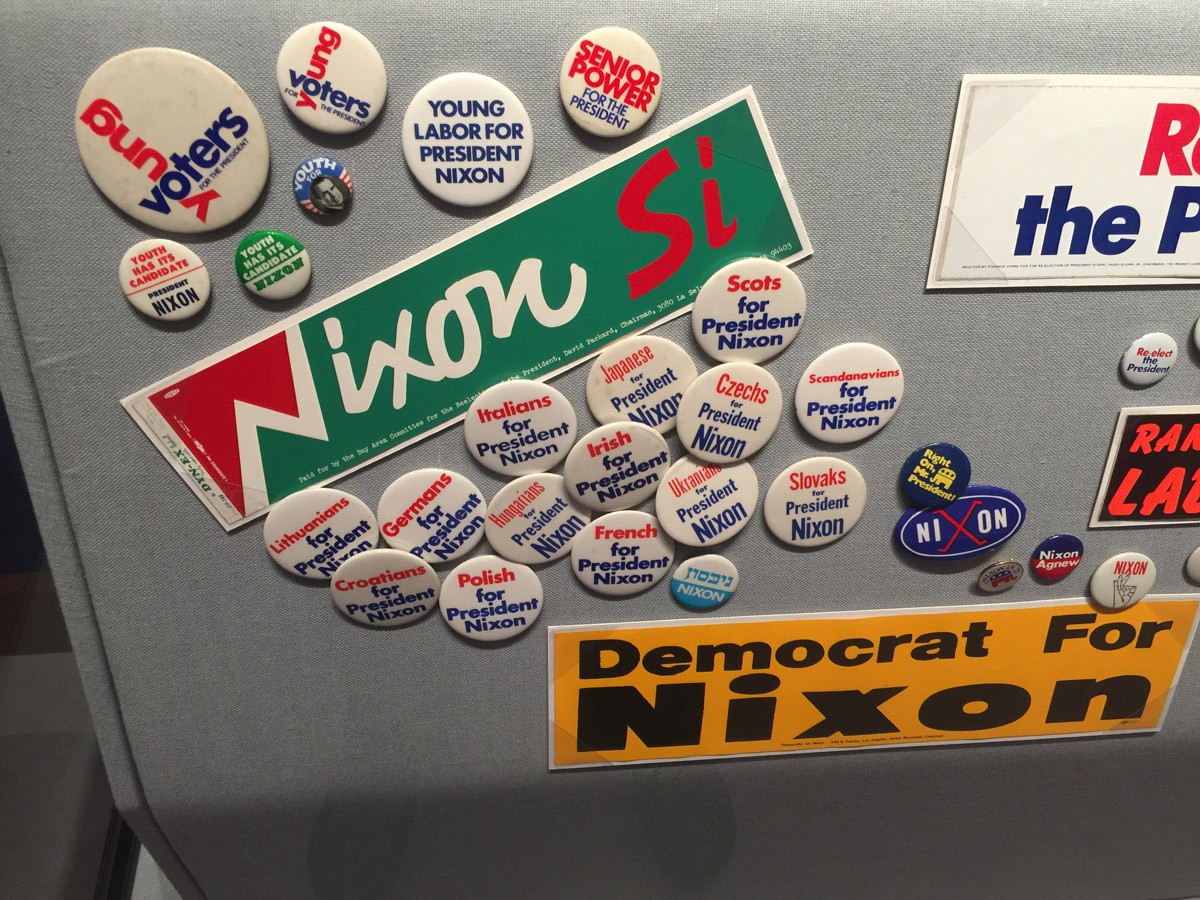
HISTORIOGRAPHY
Dr. Brittany Adams knows how to have a good time. Because I grew up with Nixon and, like him, cannot be trusted, I've arranged to try to keep myself honest in this red, white and ballooned spectacle, inviting the UC Berkeley history Ph.D. to walk with me. A professor at Irvine Valley College, she's a social historian who examines the expression of public history in circumstances exactly as these. Adams, 33, born in the first Reagan term, studies how history is remembered and the choices made in its telling. Perfect. Lately she's developing curriculum for a study-abroad program in which students visit public memorials. I'll count on her to bounce, swat and perhaps puncture my own ideologically overinflated personal Nixon balloon.
As we join the crowd making its way inside, I ask her a few basic questions, loudly.
Me: “Do people learn from personal perspective or from the construction, perhaps reconstruction, of a story at places like this?”
Adams: “Both, and sometimes it's hard—often impossible—to tell which.”
Me: “Is this about history and education, or only tourism?”
I'm clearly being provocative, but Adams insists on being reasonable: “Tourism, but with the potential for considering historiography,” reminding me that the discipline “considers how historians, museums, even presidential libraries situate history.”
[
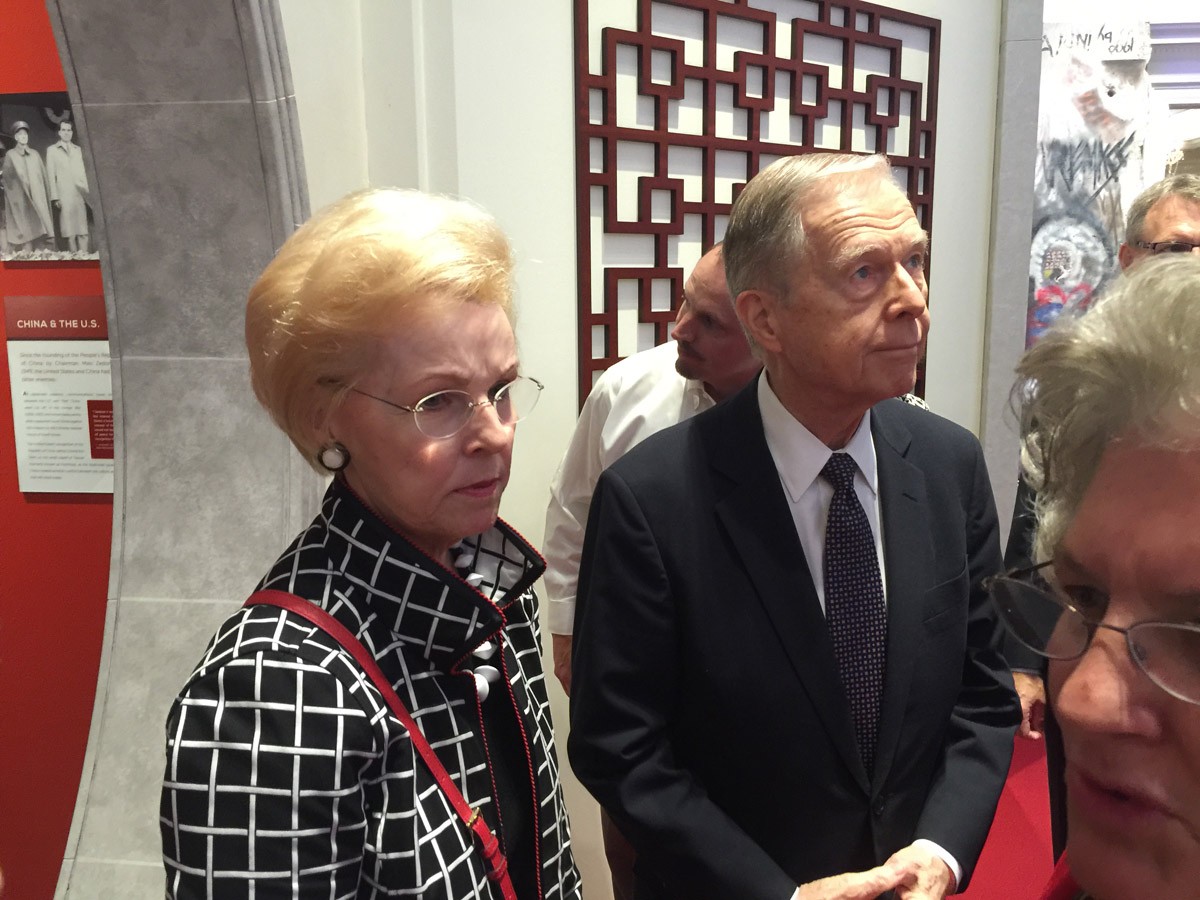
I feel smarter, perhaps more prepared to be fair, whatever that means. We are both interested in how Nixon is remembered here, as well as how choices about telling his story have been made. Informally and right on the spot, she'll evaluate what's included in “Communism and the Cold War,” “The Week That Changed the World,” a nearly joyful “Nixon In Culture” and dozens of other exhibits, to assess what's emphasized or missing. She's got objectivity, scholarly training and a good attitude. She's neither a Nixon-hater nor a Nixon-lover.
But who, you might wonder, beyond a small number of serious scholars, Nixonophiles and, as evidenced today, GOP boosters, visits the Nixon Library in the first place? Its underground trove of archival Tricky Dickery offers access to researchers, journalists and grad students. It's staffed by professionals working downstairs, below the public display, in an impressive temperature-controlled, federally administrated collection of Nixonalia; the archives last year hosted more than a thousand researchers who checked out materials from the archives. Much of this impressive and valuable collection (50 million pages of documents) is now available free online.
But what of laypeople, tourists, my fellow Americans? Do visitors schedule a half-day trip before Knott's Berry Farm, Fashion Island or the Pageant of the Masters? Perhaps locals drop in as many ur-OC families buy annual Magic Kingdom passes? A colorful circular offers perspective, or perhaps it's wishful thinking: “Only 15 minutes from Disneyland, 20 minutes from South Coast Plaza!” The syntax of a helpful “Experience the New Nixon Library & Museum” pamphlet seems to adjectively modify his name. We are offered, with a handsome Rockwell presidential portrait, the chance to consider the “newness” of the museum and perhaps Nixon himself. It suggests the proximity of each—and perhaps ourselves—to a world that travel promoters call “attractions.” Except those have shops, restaurants and rides.
But I see the library has new rides, too, to replace the old ones at this civic attraction, which even before the remodel brought 60,000 to 80,000 attendees annually. Not too shabby. And for engagement and entertainment, the multimedia and interactive displays do not disappoint. Photographs, TV and radio newscasts, displays, touch-screen audio and video-game style features, massive projections, a telephone on which visitors listen to presidential conversations—it's all there, making the story fun, if through sometimes-infantilizing bells and whistles and hanging NASA astronauts on the ceiling.
Immediately, an opportunity for critical historiography presents itself for Adams, who, like me, is enjoying things. She wonders out loud (if not too loud) why things commence in 1968, with Nixon's election. “The nation was in turmoil,” indeed, as massive wall-sized photos of protests, Dr. Martin Luther King Jr. and anti-war marches remind us. You don't have to be a historian to recognize a rescue narrative, with the just-elected “law and order” president arriving to set the nation straight. As we proceed months or yards into the first term, Adams alludes to “historical contingency” and the Kennedy assassination. I am in a 1963 of my own recalling, but I realize she means Robert F. Kennedy. Indeed, the designers might have begun Nixon's presidential victory anywhere, with his red-baiting of OC Representative Jerry Voorhis, whose The Strange Case of Richard Nixon is a classic take-apart take-down of his 1946 opponent. Or with Helen Gahagan Douglas, liberal Democratic senatorial rival whom Nixon smeared as “The Pink Lady.” Or with Nixon's vice presidency or, yes, with the murder of Bobby “On to Chicago!” Kennedy, serious Democratic contender. His assassination frightened voters, split the left, and led to Humphrey's nomination and police riots at the convention. Maybe. Who knows? Contingency, indeed.
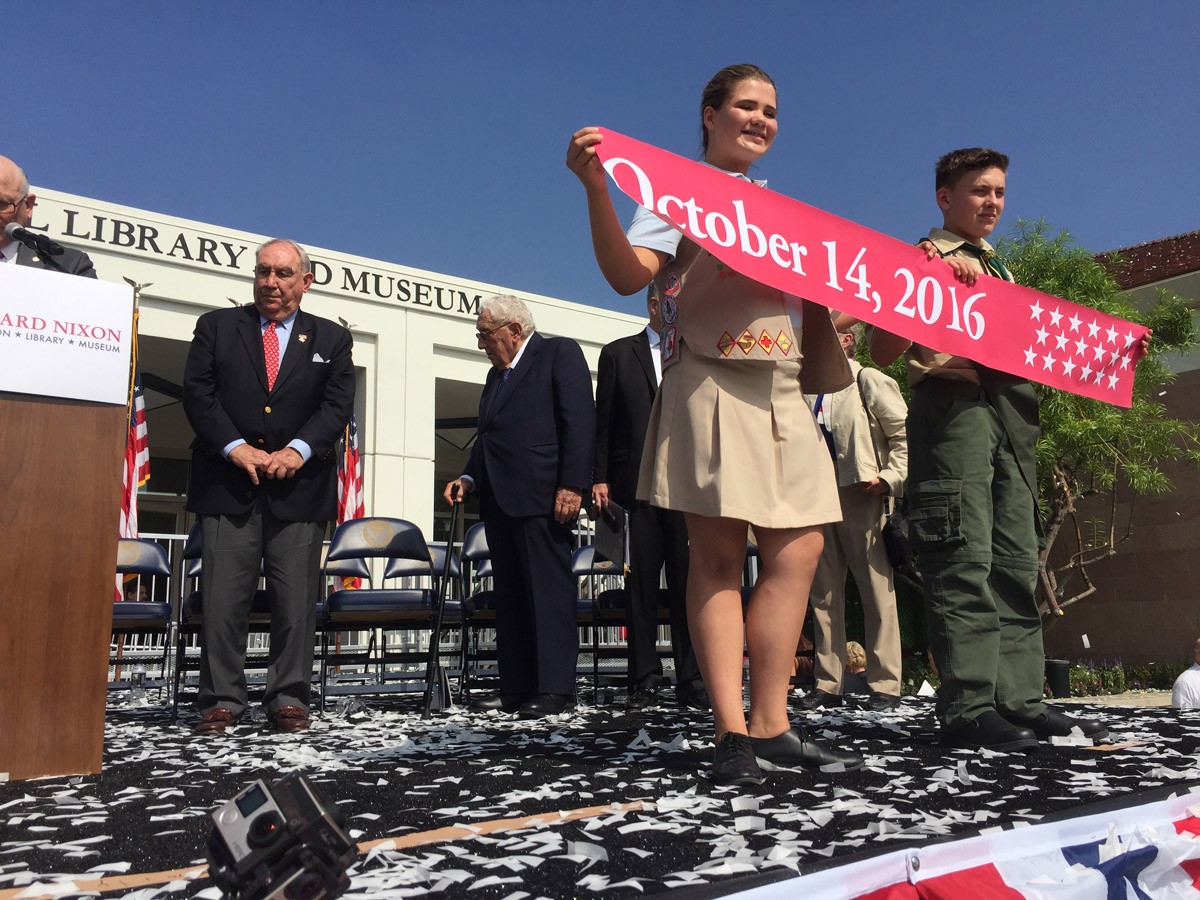
PAST PRESIDENT AS PRESENTIST PAST
We stroll along into the first term: moon landing; the “Vietnamese exhibit,” as a docent awkwardly calls it; China; and the mock living room of the Western White House. Beyond the framing, pretty clumsily, of Nixon as national savior, my personal docent stops to speculate further on why the story begins here. Not just the exhibit, no, but the take-away narrative, the “story” as offered and likely accepted by visitors jammed into the hall with us. Bobby Kennedy's assassination is a terrific example of how resulting events are dependent (or contingent) on multiple causes that shape when, how and why history happened the way it did. We stand together between upheaval and inaugural exuberance.
Remember when I doubted having fun here? I now officially dig the place. “Nixon's the One!” I shout. Sure, there's irony, but, indeed, there's suddenly, courtesy of my personal historian, hope for more, including more irony. Some deal.
Alas, there's no video of the personal 45-minute meta-tour I get, but highlights include watching Adams assess the justifiably celebrated list of Nixon's domestic achievements, featured in a prime spot in the main rotunda. You know the list of successes, or you should: Title IX, Environmental Protection Agency, the Clean Air and Clean Water Acts. Declaration of war on cancer. Voting rights for 18-year-olds. Desegregating Southern schools. Passing a Family Assistance Bill. Hiring women in the Executive Branch. Advocating for Native Americans. Expanding funding of minority businesses and historically black colleges.
[
Adams nods appreciatively, or perhaps only to remind or scold me, the Nixon-hater, trying to be a Nixon scholar. But, wait, she's onto something more, and it's beautiful to watch. We search for evidence of two favorite Nixon achievements that Adams finds conspicuous in their absence—and perhaps address my questions about normalization. We retrace our steps, ask around. There's no mention that we can find of Roe v. Wade, arguably one of the Supreme Court's defining rulings of the past half-century. Hmm. And where, exactly, is Nixon's smart, ambitious energy initiative to reduce dependence on foreign oil? Just one line on the wall of achievement, offered with atypical shyness: “Sent the first presidential energy message to Congress.”
“Why no coverage of either Roe v. Wade or of his energy policy?” asks Adams. It's a question, not a criticism necessarily. She reminds me that three of the president's nominees represented the majority pro-choice side. “I can't help but think,” she says, “that these might be examples of a particularly presentist editing out. Since Nixon, they are issues that have become much more important to the Republican Party. It seems quite purposeful to leave them out.”
Too bad. I look around at all the other presentists, old and young. At least Nixon's ostensibly pro-womens' liberation and Equal Rights Amendment positions are featured in impressive sections on women's rights. “Those are spaces where Roe seems glaringly omitted,” Adams says.
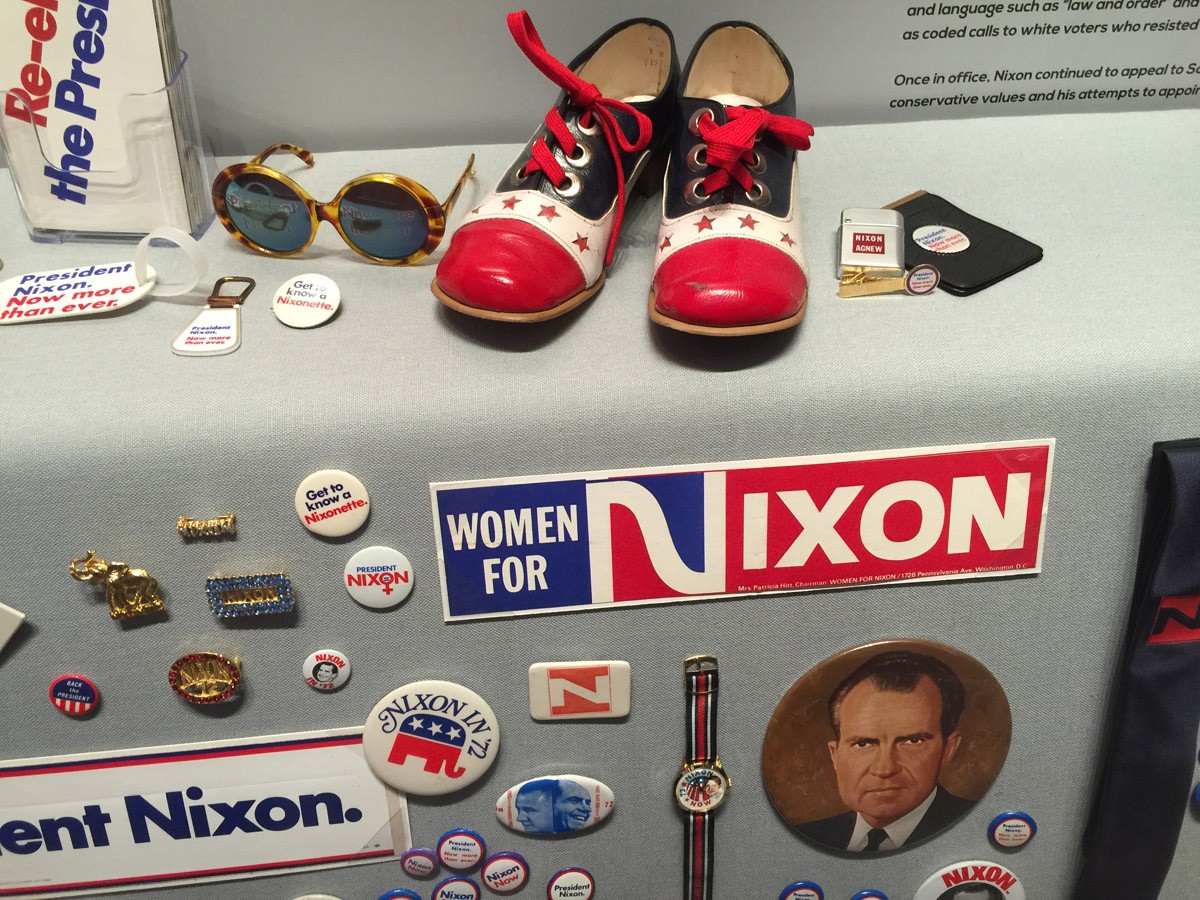
I love the way she talks. She's right: a lot of Nixon doesn't fit the current GOP posture. (If you can stand it, read the party platform.) I note appreciatively that Adams has come to the museum knowing what to look for. She smiles, seems proud. “That's what historians do,” she says. “We're always looking for where the trick is. Where the purposeful bias is. Bias isn't bad; we just have to be aware of it, especially in a place aspiring to be a historical setting. And the problem is that people here might see this as history.”
Where the “trick” is, indeed! As in tricky. I'm delighted and ready for more contestable history and historiography, well-organized, and often quite fun. I revel in Nixon bumper stickers and buttons and find a version of the campaign wristwatch I cherish today, gifted to a 12-year-old by well-meaning if confused Republican relatives. I pet a cast-iron dog in faux San Clemente. I look for Nixon buddy Bebe Rebozo. It's just fun to say. I perform my terrific Nixon-resignation goodbye wave in front of the helicopter, embarrassing Adams, pose with combat infantrymen in Vietnam, and admire Pat's hats and gowns. I sit at the desk in the Oval Office, searching for the button activating the secret recording system.
Soon, it's time to go. I won't have Nixon to kick around anymore. I'm done kicking right-wing presidents, though I haven't visited Ronald Reagan's place in Simi Valley, where I'd need to be bound and gagged for my safety and that of others. Here, there's indeed a new Nixon, and the museum has, for good or bad, normalized him. I mean, of course, for good and bad. Notwithstanding the overlay of current GOP orthodoxies, its story is probably as honest as it could be, especially for a dishonest creep who I seem to appreciate more than I thought I hated.
And I have perhaps a key to reconciling with Nixon, beyond showing up with my own historian. (Note to self: Take her everywhere.) Robbed of the cartoon villainy and singular abuse-of-power story, overlooking millions of Southeast Asian dead, and celebrated for unequivocally liberal positions, Nixon seems nearly normal. But to what end? He worked just fine as a strange case or case study, easy to blame or forget. What's different now?
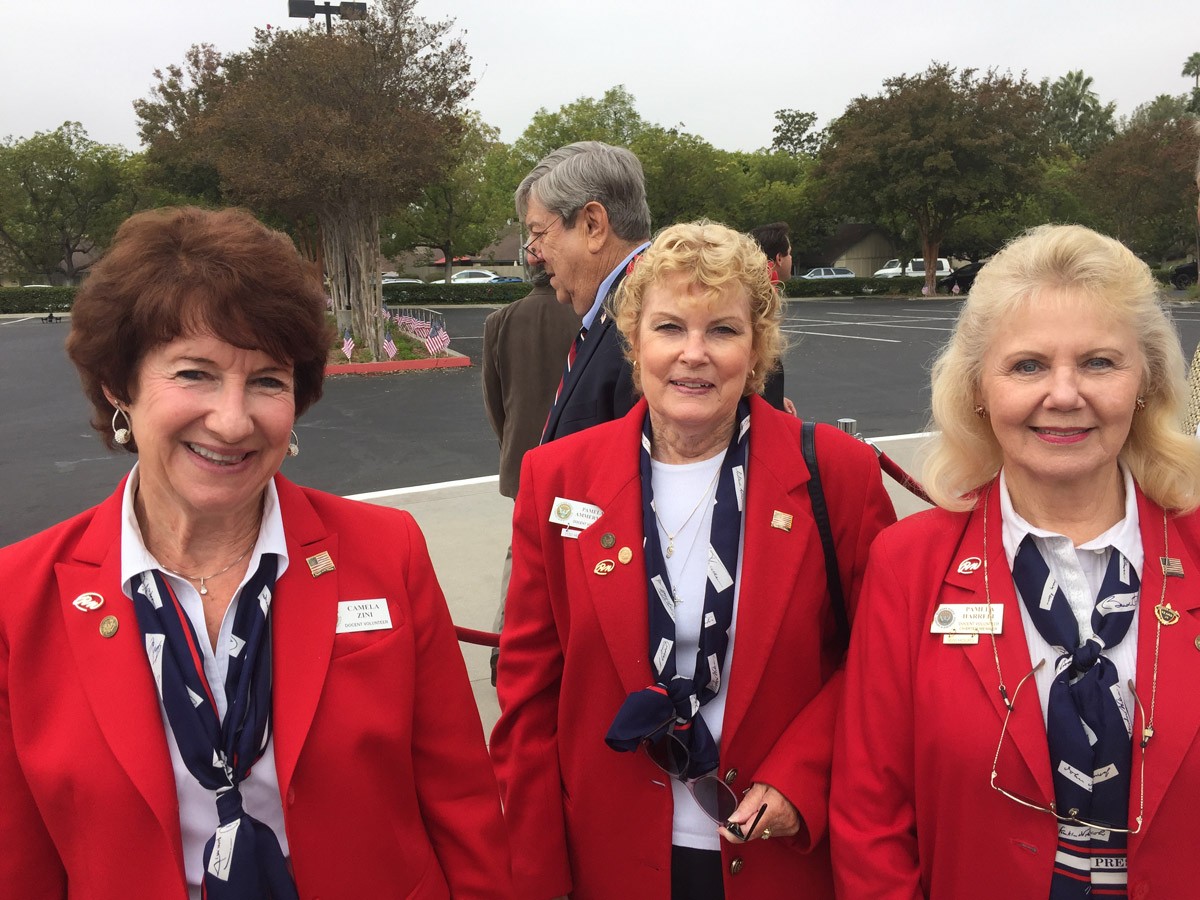
I'm glad I asked. I'm glad I came, too, though it may all be too much, too late. Adams and I exit the confetti-strewn grounds and cross the street to the Quaker parking lot. There stand wretched embodiments of the newest normal, just as I've gotten used to the old one: Trumpeteers hawking “Make America Great Again” hate paraphernalia yards from the old Nixon and the new, newer, newest Nixon, if, politically, miles, decades, wars, scandals and disgraces away.
Three weeks before the election, and at last, I'm more sympathetic to Nixon, who, as so many have observed lately, today could not get elected as a Republican.
Say, did you know Ike was first approached to run as a Democrat? Eisenhower wasn't Nixon daughter Julie's father-in-law yet, not by a long shot. He declined. Talk about contingencies. Or don't. Young and old alike should visit the Richard Nixon Library and Birthplace and Contingency Factory—and quick. It might remind us all how far we are from the close 1960 election, characterized by real, actual vote fraud. Many argue it robbed Nixon of the presidency. And if only he'd shaved for that TV debate with Bobby's older brother! Meanwhile, and personally, I learned that Dick loved Pat, and when their daughter spoke something kind and good from the podium, I didn't flinch. In her father, Tricia “sees an idealistic leader climbing the steep, craggy mountains of the real world to reach the summit to make a positive difference.”
[
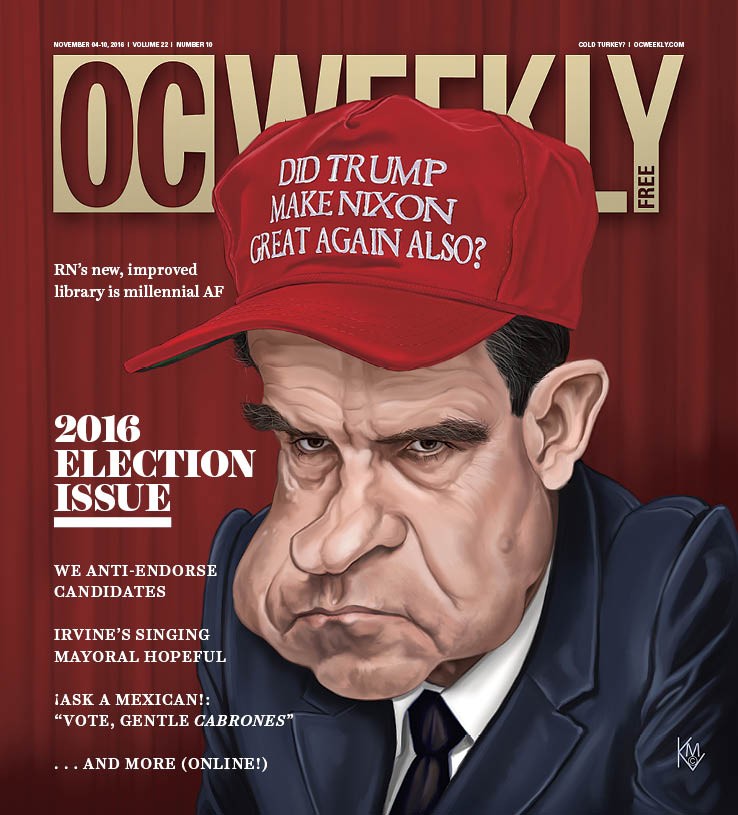
And, then, speaking directly to me, she offered the hope “that your journey through the library would be as special as you are.” Me, special. Yes, I know. And, yes, it's weird. But Tricia's dad's museum has made a difference, hasn't quit and is mostly honest. It's a long-overdue corrective and worthwhile field trip. There is, happily, no effort to Make Nixon Great. Other contingencies exist. For one, I plan to take my son, who'll perhaps understand his own father as a result. Sure, emphasis and priorities flatter the office, omissions and under- and overstatement are probably too generous to the pride of Whittier, where Nixon grew up. But, finally, as struggling presentists, we all, as you can see, struggle to tell a story or something like it. The rest is up to the future, which arrives on Nov. 8.

